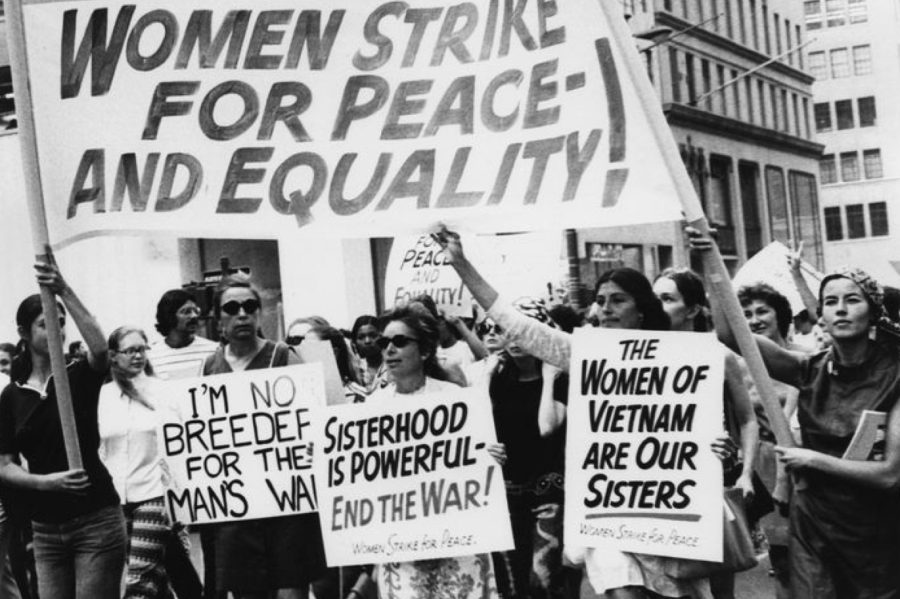International Women’s Day: The Push for Equality
A look at International Women’s Day and feminism through the last century
April 14, 2022
“A feminist is anyone who recognizes the equality and full humanity of women and men.” – Gloria Steinem, American feminism journalist and social political activist.
For over a century, International Women’s Day has been celebrated to highlight the progress and triumph made by women from not only the past and present but in the future as well.
It was at a 1910 women’s conference in Copenhagen where Clara Zetkin, an active leader within the Social Democratic Party of Germany, presented the idea of an International Women’s Day to political leaders and other attendees. They received it with open arms and overwhelming enthusiasm, and the very next year more than a million men and women alike attended rallies which campaigned for women’s rights on March 8.
The word “feminism” migrated from France to the United States around this time as well. Feminism includes legal rights as well as financial independence and the transformation in the relationship between men and women. Following the ratification of the 19th amendment in 1920–which granted women the right to vote—feminism moved beyond just suffrage-focused groups. This was the biggest feminist movement of the time.
The fight didn’t end there. Following World War II, more and more women began to move to the workforce and pursue higher education. The Women’s Liberation Movement of the late 60’s and early 70’s revolved around one goal: revolutionizing the fundamental aspects of life as a woman. These included domesticity, education, employment and sexuality. In 1966, prominent feminists came together to form the National Organization for Women (NOW) within which they fought for access to birth control, legal abortion, equal employment opportunity and much more. From there many other feminist organizations grew.
This movement was criticized by feminists everywhere of every color for it’s exclusion of nonwhite working class women and from this came the rise of black feminism. A prime example of the philosophies behind black feminism comes from the struggle of black feminists to have to choose between affiliating with the male-led Black Power Movement or the white female-led Women’s Liberation Movement. The response to this was the forming of their very own groups that sort of married the ideas behind the two other movements; these included the National Black Feminist Organization and the National Alliance of Black Feminists.
This was the era that blew up feminism, not only legally but socially as well. Through this came movements from the late 70’s, like the feminst sex wars and anti-porn feminism, to movements throughout the 90’s known as Riot Grrrls, which responded to the male-dominated music scene by forming girls groups, and meeting once a week to discuss issues like rape, racism and body image.
Most recently, feminist groups around the world keep the goal and practice of aiding women around the world. Groups like UN Women, Global Grassroots and the National Organization for Women promote the leadership and literacy of women in countries across the world like Uganda, as well as gender equality, ending violence against women and the economic empowerment of women.
Each year in the United States and elsewhere, women unite at several different conferences to celebrate not only International Women’s Day and how far we have come, but also to press towards and amplify the issues that women continue to face. The push for equality is one-hundred-percent ongoing, and dates like International Women’s Day are crucial to the progress of women and should be talked about and commemorated in every community.
Read More:








